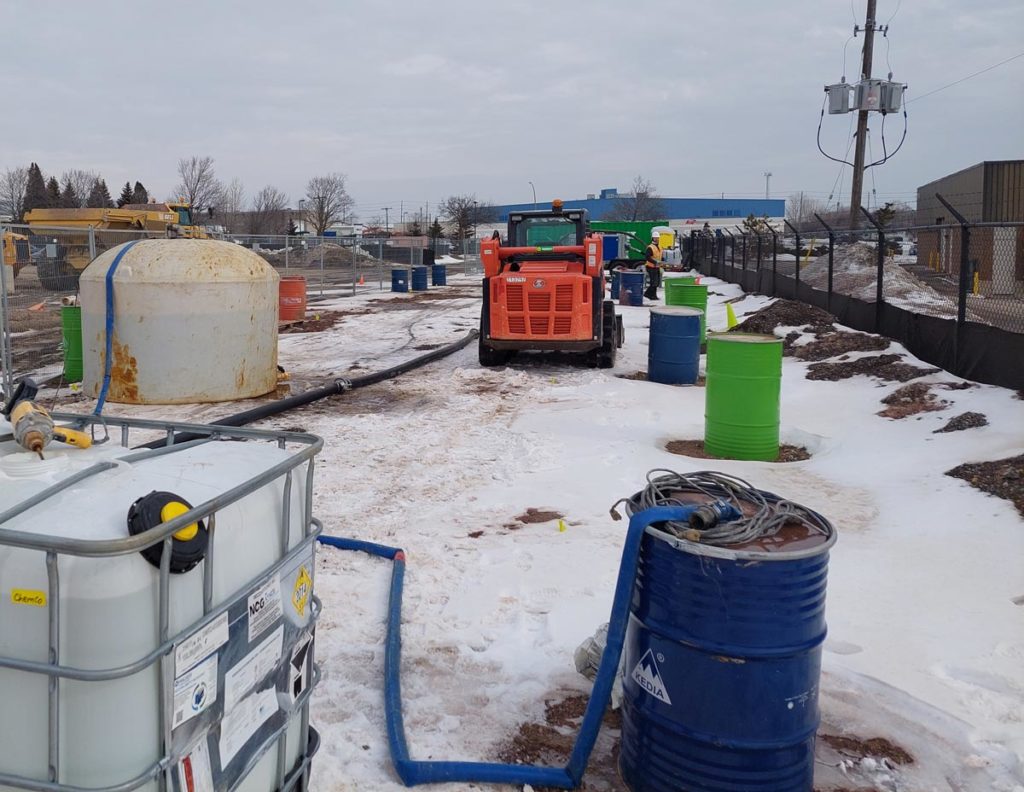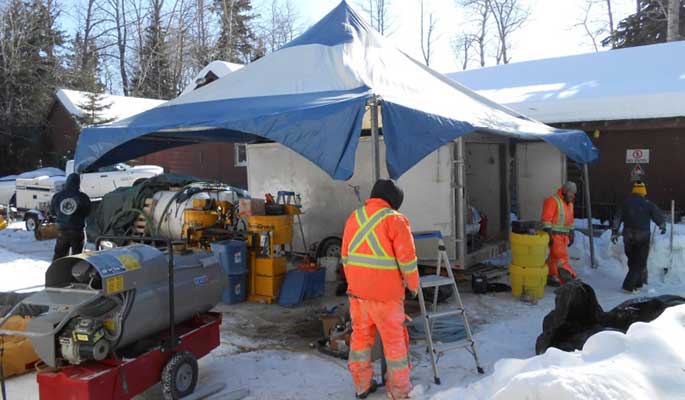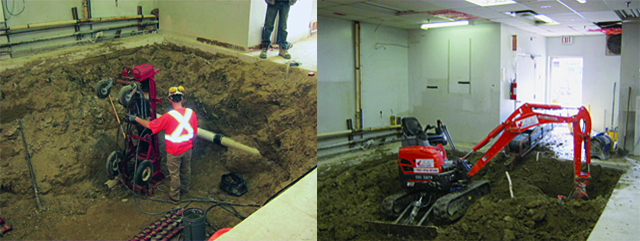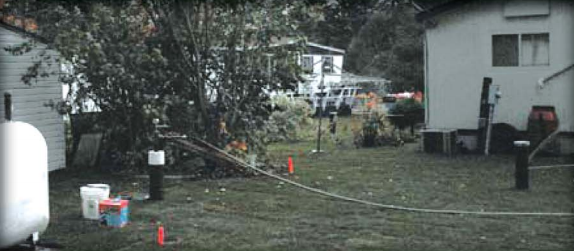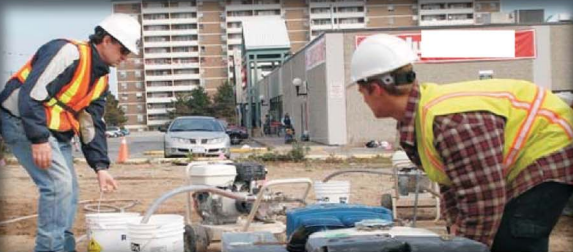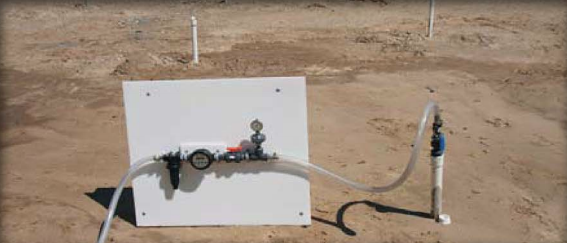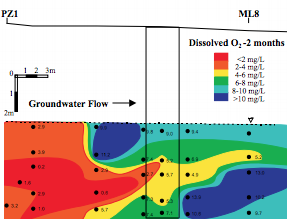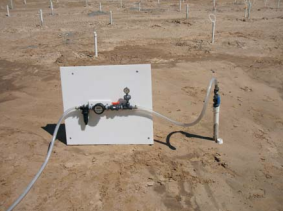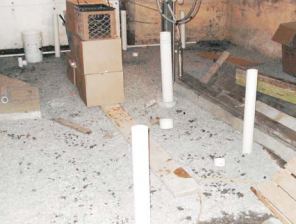In-Situ Remediation
Listed below are our latest case studies within the project category, In-Situ Remediation:
Bedrock Remediation Case Study – Where There’s a Will There’s a Way
The site was formerly operated as a steel manufacturing facility that included historic degreasing operations and chemical storage. Environmental investigations identified the presence of chlorinated solvents, including trichloroethylene (TCE), dichloroethylene (DCE) isomers, and vinyl chloride (VC), in groundwater located in
Read MoreIn-Situ Trap & Treat® Injection Satisfies Ministry Standards
Location: Industrial in Greater Toronto Area Contaminant: Chlorinated ethenes and ethanes Concentration: Dissolved phase groundwater impacts (up to 1,000 ug/L) Formation Type: 3.0 m thick layer of saturated silty sands, above limestone bedrock Historic industrial activities resulted in two separate
Read MoreCold Weather Injections at Remote Site
A historical leaking UST resulted in contamination to soil and groundwater inside a remote National Park. A Risk Assessment identified concerns over benzene concentrations for a planned building expansion. Excavation was ruled out due to the depth of the impacts
Read MoreChlorinated Solvents Treated Using “Trickle-Down” Method
Historic releases over many years caused significant vertical migration of PCE into soil and ground water. Major challenge encountered: impacts greater than 6 mbgs in silty clay till beneath occupied building.
Read MoreBedrock Drinking Water Well Protected
At a trailer park in Eastern Ontario, two tanks released heating oil into the underlying unconsolidated and fractured rock. Though much of the affected overburden was excavated, a petroleum hydrocarbon plume and associated free phase remained in the fractured bedrock,
Read MoreIn-Situ Injections Revitalize Historic Site
Historical leaks from a series of underground tanks and pipes were indentified at a former fuel dispensing facility in Toronto. The leakage had created an underground plume over an area of approximately 1,000m2. Excavation was deemed to be technically challenging
Read MoreVertex Saves Wells without Disrupting Residents
A spill near a residential area in Quebec released petroleum hydrocarbons into the underlying groundwater and soil. The accident posed a risk to nearby wells, endangering the local water supply. PHC contaminants included: Benzene, Toluene, Xylene
Read MoreResidential Area in Quebec
Near a residential area in Quebec, an accidental release of petroleum hydrocarbons from a spill into the underlying groundwater and soil posed a risk to nearby water supply wells. Groundwater concentrations for selected PHCs included: Benzene (maximum concentration of 146
Read MoreIndustrial Site in New Jersey
At an industrial site in New Jersey, historical leakage from a UST released petroleum hydrocarbons into the underlying groundwater and soil creating a health and ecology risk to overlying and down gradient receptors. Soil concentrations of PHCs included: BTEX (maximum
Read MoreRemote Residence Leaked Petroleum Hydrocarbons
At a remote residence, petroleum hydrocarbons leaked from a UST into the underlying groundwater and soil creating a health and ecology risk to the residents and local environment. Soil concentrations of PHCs included: BTEX (maximum concentration of 152 μg/g) F1
Read More

